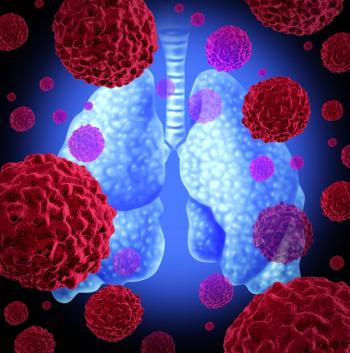
Polypharmacy in Patients with Cancer Over 65 May Predict Hospitalization
In this study, polypharmacy during the 6-month time period pre-IV chemotherapy was highly predictive of post-chemotherapy inpatient hospitalization.
A large population-based study, published in the Journal of Geriatric Oncology, found that polypharmacy during the 6-month time period before IV chemotherapy is highly predictive of post-chemotherapy inpatient hospitalization.1
Given these findings, researchers indicated that they have highlighted a significant area of concern and a research area that is in need of quality improvement.
“Polypharmacy, defined as patients taking 5 or more medications, is a serious problem in patients,” Ginah Nightingale, PharmD, associate professor in the College of Pharmacy at Thomas Jefferson University, said in a press release.2 “Older patients see multiple specialists, and those specialists rarely coordinate with each other to ensure that the medications are absolutely essential or weighed against a patient’s priorities. So, patients end up accumulating more than they absolutely need to take.”
Researchers used the Surveillance, Epidemiology and End Results-Medicare linked files as their main data source. Patients ≥65 years of age were included in the study if they were diagnosed with prostate (n = 1,430), breast (n = 5,490, or lung cancer (n = 7,309) between 1991 and 2013 and received IV chemotherapy between 2011 and 2014. Moreover, drug event files during the 6-month window before IV chemotherapy initiation determined their polypharmacy status.
Overall, 13,959 patients with prostate, breast, or lung cancer treated with IV chemotherapy were identified. The median number of prescription medications seen during the 6-month timeframe pre-IV chemotherapy initiation was high, with 10 among patients with prostate cancer, 9 among patients with breast cancer, and 11 among patients with lung cancer.
Compared to those taking <5 prescriptions, the post-chemotherapy hospitalization rate for patients with prostate cancer was 42%, 75%, and 114% higher among those taking 5-9, 10-14, and 15 or more medications, respectively. Additionally, patients with breast and lung cancer demonstrated similar patterns.
“Although the National Comprehensive Cancer Network (NCCN) guidelines on older adult oncology recommend a thorough evaluation for polypharmacy and medication related problems, the prevalence of polypharmacy in this patient population remains high,” the authors wrote. “This problem is further complicated by the addition of multiple physicians whom these patients visit, including their oncologists and primary care physicians, as well as by the herbal and complementary medications that many older patients with cancer use.”
Notably, in this study, potentially inappropriate medication usage was positively associated with number of inpatient visits, number of emergency room visits, non-drug costs, and total medical costs in all 3 cancer types studied. However, the researchers did not have information about whether the inpatient hospitalizations were preventable or unpreventable because the causes for hospitalization were unknown.
The authors indicated that a logical next step would be to conduct a prospective randomized controlled trial to determine whether improved medication management can reduce inpatient hospitalization and other healthcare resource utilization among older adults who are treated with chemotherapy.
“The question is whether we can work with patients and their multiple healthcare providers to de-prescribe medicines that might no longer be essential and may interfere with their cancer care,” said Nightingale. “We are in the process of designing a randomized study to test whether we can improve cancer-patient outcomes by reducing the number of medications in the older population of patients.”
References:
1. Lu-Yao G, Nightingale G, Nikita N, et al. Relationship between polypharmacy and inpatient hospitalization among older adults with cancer treated with intravenous chemotherapy. Journal of Geriatric Oncology. doi:10.1016/j.jgo.2020.03.001.
2. Cancer Patients Over 65, on Multiple Medicines, Are at Higher Risk of Hospitalization [news release]. Philadelphia, Pennsylvania. Published March 20, 2020. newswise.com/articles/cancer-patients-over-65-on-multiple-medicines-are-at-higher-risk-of-hospitalization?sc=mwhr&xy=10021790. Accessed March 25, 2020.
Newsletter
Stay up to date on recent advances in the multidisciplinary approach to cancer.
































































































